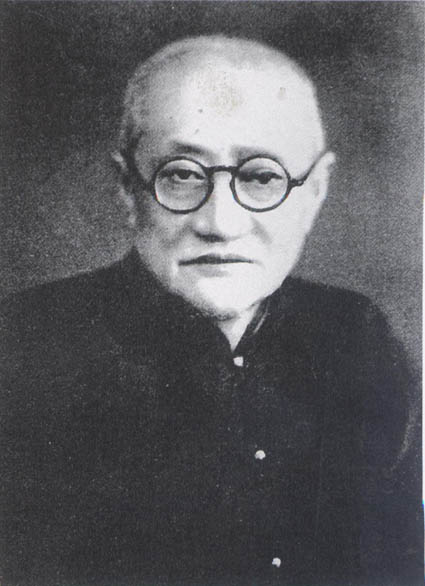Views
Wáng Yītíng 王一亭 (1867-1938)
A famous painter and calligrapher of the Republican period, Wáng was also a noted industrialist and lay Buddhist.
- Born December 4, 1867 (11/9 Tóngzhì 同治 6; Tàipíng tiānguó 太平天國 17) in Wúxīng County 吳興縣, Zhèjiāng 浙江
- Died Nomvember 13, 1938 (Mínguó 民國 27) in Shànghǎi 上海
- Name 名: Zhèn 震
- Style name 號: Méihuāguǎn zhǔ 梅花館主, Haiyúnlóu zhǔ 海雲樓主, Báilóng shān rén 白龍山人
- Courtesy name 字: Yītíng 一亭
- Dharma name 法名: Juéqì 覺器
Biography
At 13, he went to Shànghǎi to study, entering later the Guǎngfāng yánguǎn 廣方言館, where he studied foreign languages. It was at this time that his teachers noticed his painting abilities, and he began to show his paintings.
At 20, he began working at Tiānyú hào 天餘號, a shipping company run by Lǐ Píngshū 李平書.
In 1907 (Guāngxù 光緒 33), he got a job as a comprador with a Japanese steamship company. And in 1910, he and others (including Lǐ and Chén Qíměi 陳其美) founded the People's News 民立報. He also joined Sun Yat-sen's Revolutionary Alliance 同盟會 that year. After the Revolution of 1911, Wáng was put in charge of the bureau overlooking agriculture, industry, and business in Sahnghǎi.
Wáng had been a believer in Buddhism since he was young. He took refuge under Yīnggān 應乾 at Liúyún Temple 留雲寺 in Shànghǎi. He had a Buddhist altar in his home, and he chanted the name of Guānyīn 觀音 Bodhisattva daily. After 1913, he dedicated himself to charitable activities, including building housing, a library, and a hospital.
In 1918, he became vice-president of the newly formed Shànghǎi World Lay Buddhist Association 上海世界佛教居士林, which split in 1922 into the World Lay Buddhist Association 世界佛教居士林 and the Shànghǎi Buddhist Pure Karma Society 上海佛教淨業社. He was involved with the publication of their periodical, the Magazine of the World Buddhist Lay Association 世界佛教居士林林刊.
In 1926, he and others formed the Shanghai Buddhist Restoration Association 上佛教維持會 to help rebuild temples in China. The following year, 1927, he became the president of the World Lay Buddhist Association. In 1929, he was involved in writing the charter for the Chinese Buddhist Association 中國佛教會.
He continued to paint, and the Emperor of Japan even viewed his paintings, which sold for tens of thousands of yuán in Japan. He used the money he earned from his painting for charitable activities.
In 1937, he fled Shànghǎi for the inner provinces, but while en route in Hong Kong, he became ill. After convalescing in Hong Kong for one year, he returned to Shànghǎi, where he passed away on November, 13.
Important Works
- 白龍山人畫集
- 二十四孝畫集
- 孔子哲學
- 王一亭選集
- 王一亭題畫詩選集
Notable Students
Notes
References:
